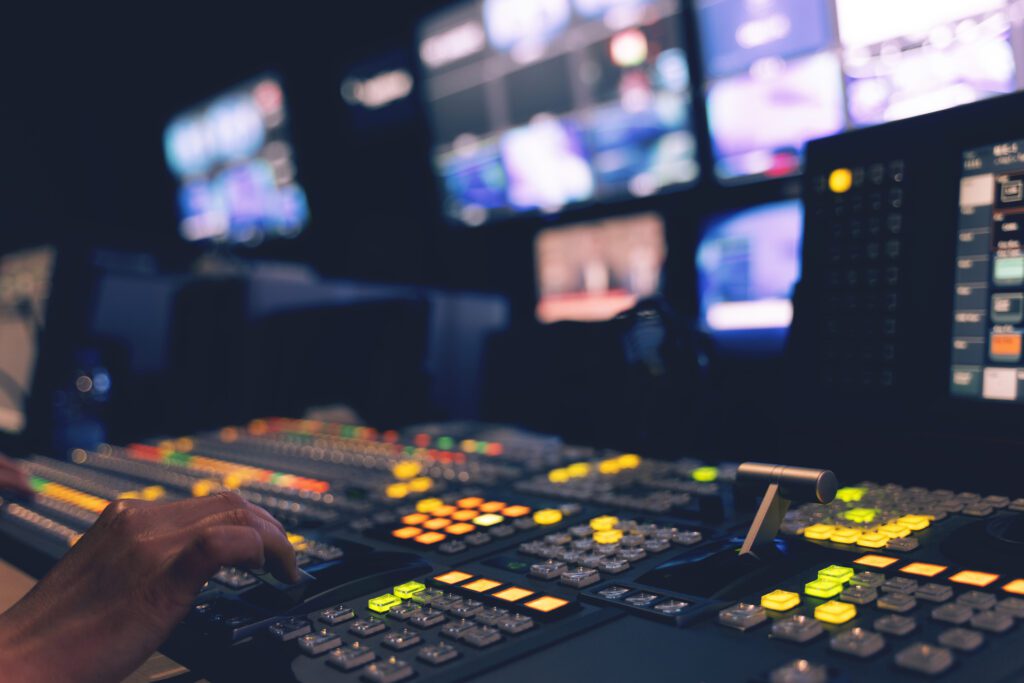AI’s Role in Video Editing

Sean Kimber was imagining a film career when he started out on a long road from Upstate New York. There, he began editing commercials and working for a local broadcaster. Eventually, he and his wife relocated to the DC area, partly for a job he landed with what is now NBC Sports Washington.
Around 2016, he was working at Leading Authorities, Inc., in their video department. His work for associations promoting their summits caught the eye of MeanGreen Media’s Glenn Greenstein, who brought Kimber onboard. He’s now a senior designer, editor and animator for the Democratic post-production shop.
C&E: How has political creative changed since you started in terms of what clients are asking for?
Kimber: The style has changed. When I started, there was always a little bit of that punchiness because of what they used to call MTV editing at the time. I remember when grunge was a big thing, and you’d have ink splatters everywhere. I remember when that shine effect was on everything — you could see shine behind all the letters in a motion graphic title. There’s just different trends that kind of emerged over the years. Now, it’s almost reverted to kind of a hand-drawn look in a lot of ways — at least for Gen Z videos and that sort of thing.
C&E: Is AI playing a part in video editing yet?
Kimber: I think, right now, it’s still very new, so everyone’s kind of trying to figure out exactly how it could be used. Making political ads, we have to be extremely careful with AI because we want there to be that trust and that honesty in what we produce. So, you know, we don’t want to deep fake anything. It is helpful to have things like the background removers and stuff, and that doesn’t seem to cross any ethical lines.
C&E: Where do you see editing going with AI?
Kimber: It’s exploding this year, so I have a feeling it’s going to be very much a part of our workflow, probably I would say by the 2026 political season, if not before. Whether that’ll be just removing backgrounds or if it’s going to be producing some elements, not necessarily things that we’re trying to say happened or whatever, but more like something to enhance the videos that we already have or to upscale the videos so they look better. That’s where I see it going. But I’m open to the fact that it may end up exploding even more than I’m anticipating.
C&E: How much does TikTok influence editing of political spots these days?
Kimber: We haven’t yet had to make TikTok-specific ads. But we’ll do the 16-by-9 for TV or YouTube, and then we’ll often have to do the 1-by-1 format for something like Instagram, and 9-by-16 for something like TikTok. If we know in advance, we will try and create the graphics in a way that it won’t be that hard to convert it to TikTok. Obviously, sometimes we don’t know in advance and we just kind of have to scramble and create another version afterwards. The having to reformat things really started probably in 2020, and is almost an expected part of our workflow at this point.
C&E: How are you preparing for 2024?
Kimber: 2024 is gonna be a big year. We just had a meeting about it, where we’re trying to figure out what we need as far as staffing, what we need as far as technology and tools. So we do anticipate having a bigger team this year. Obviously, we’ll be reevaluating tools towards the end of the year. It’s a little early now because who knows what’s going to come out.
We’ve been doing more actual video production … going out in the field. So I anticipate that we will probably be doing a lot more of that as well next year. Now, we usually don’t have much say in the messaging or anything like that. But one thing we’re trying to do is set up creative calls with our clients in anticipation of the season so we can all sit down together in a room and look at different creative done by ourselves, done by them, done by other agencies, and just try and figure out how we want to shape [our] creative in the coming year.
C&E: Do clients who commission animated spots understand the time that it takes to produce them?
Kimber: We have a good repertoire of agencies who do seem to have a good finger on the pulse of that. They know that if it’s going to be a graphics-heavy spot, it’s going to take more time [and] probably cost more. It helps to set expectations and, we very rarely hear, ‘What do you mean you can’t get this done by tomorrow?’ If it’s like a 30-second incredibly intense video.
C&E: How’d you learn how to do animation?
Kimber: Over the years, I picked up a lot. At each job, it seemed like I would learn a lot and then kind of plateau, and move on to the next job where there’d be new editors, a new type of video that I was producing … and that would help expand my skills even more. Once I joined the sports station, I started learning Cinema 4D and 3D work, and then once I moved to LAI video, I felt like I learned a lot more about design, so incorporating that more into my motion graphics and animation. And so by the time I came to MeanGreen, I felt like I had a very solid foundation of animation and motion graphics. And then, obviously, I’ve learned much more since joining the team.
